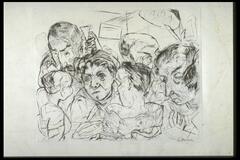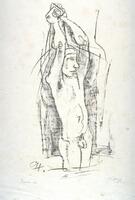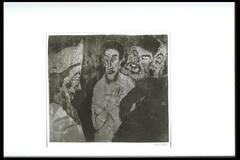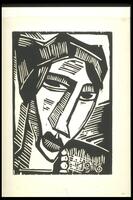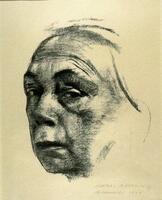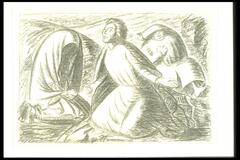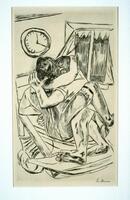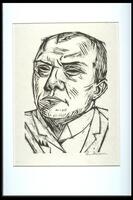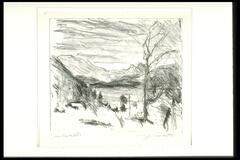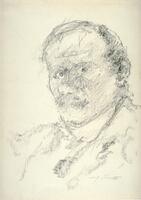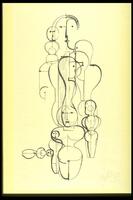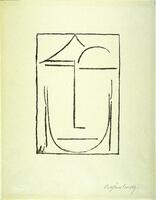Während des Nationalsozialismus in Deutschland hat die „Entartete Kunst” Ausstellung in München 1937 stattgefunden, und dies war die wichtigste Ausstellung, die das deutsche Volk mit dem nationalsozialistischen Konzept der „Entarte Kunst“ vertraut machte, aber es gab auch viele andere Ausstellungen in anderen Staedten vor dieser Ausstellung. Entartet ist ein abfälliges Wort. Mit „entarteter Kunst“ bezeichneten die Nazis Kunst, die ihren Idealen widerspraech. Diese Kunstausstellung sollte zeigen, wie Kunstwerke den Unterschied der “Rassen” zeigen. Die Ausstellung hat Kunst, die in deutschen Museen beschlagnahmt wurde, gezeigt, und die Ausstellung benutzte abfällige Kommentare und ein denunzierendes Ausstellungsdesign, um die Kunstwerke schlecht aussehen zu lassen. Besucher sollten kommen, um ihre Überlegenheit über “entartete Kunst” zu genießen. Aber viele Besucher sind aus Neugier hingegangen, und einige Besucher sind gegangen, um Kunst von ihren Lieblingskünstlern zu sehen. Die meisten Besucher zogen eigentlich die „entartete Kunst“ vor. Die Sammlung hat praktisch alle deutsche moderne Kunst ausgestellt, und sie hat auch Kunst von berühmten Künstlern wie Picasso gezeigt. Meine Sammlung stellt Kunst von Künstlern, die in München gezeigt wurden, und andere Kunst, die als “entartet” betrachtet wurde, zusammen.
14 Items in this Learning Collection
Collection Object
Collection Object
Collection Object
Collection Object
Collection Object
Collection Object
Collection Object
Collection Object
Collection Object
Collection Object
Collection Object
Copyright
All Rights Reserved
()
Konzentrische Gruppe: Figurenplan K
Accession Number
1953/2.4
Title
Konzentrische Gruppe: Figurenplan K
Artist(s)
Oskar Schlemmer
Artist Nationality
German (culture or style)
Object Creation Date
1921
Medium & Support
lithograph on paper
Dimensions
15 11/16 in x 7 5/8 in (39.8 cm x 19.4 cm);19 5/16 in x 13 7/16 in (49.1 cm x 34.2 cm);22 1/8 in x 18 in (56.2 cm x 45.7 cm)
Credit Line
Museum Purchase
Subject matter
Concentric Groups depicts round female torsos that look something like dressmaker forms with heads. They are layered over one another and share some of their shapes with each other. For example, the face at the top of the print could belong to one, two, or three women depending on the viewer's perspective. This print was part of the first portfolio in a series that was published by the Bauhaus School titled, New European Graphics, 1st Portfolio: Masters of the State Bauhaus, Weimar. It would be followed by three other portfolios that included a variety of artists from Germany, Italy, and Russia. Schlemmer taught at the Bauhaus School, during which time he produced a ballet that would become one of his best known pieces.
Physical Description
This composition shows a series of outlines of female torsos with heads, layered over one another. All of them appear to be upright except for one that is horizontal on the bottom left side. Some of the heads are in profile and others are arranged facing forward.
Primary Object Classification
Print
Collection Area
Modern and Contemporary
Rights
If you are interested in using an image for a publication, please visit http://umma.umich.edu/request-image for more information and to fill out the online Image Rights and Reproductions Request Form.
Keywords
Abstract (fine arts style)
Figures
German (culture or style)
faces (animal or human components)
man
modern and contemporary art
study
woman
women (female humans)
1953/2.4
Title
Konzentrische Gruppe: Figurenplan K
Artist(s)
Oskar Schlemmer
Artist Nationality
German (culture or style)
Object Creation Date
1921
Medium & Support
lithograph on paper
Dimensions
15 11/16 in x 7 5/8 in (39.8 cm x 19.4 cm);19 5/16 in x 13 7/16 in (49.1 cm x 34.2 cm);22 1/8 in x 18 in (56.2 cm x 45.7 cm)
Credit Line
Museum Purchase
Subject matter
Concentric Groups depicts round female torsos that look something like dressmaker forms with heads. They are layered over one another and share some of their shapes with each other. For example, the face at the top of the print could belong to one, two, or three women depending on the viewer's perspective. This print was part of the first portfolio in a series that was published by the Bauhaus School titled, New European Graphics, 1st Portfolio: Masters of the State Bauhaus, Weimar. It would be followed by three other portfolios that included a variety of artists from Germany, Italy, and Russia. Schlemmer taught at the Bauhaus School, during which time he produced a ballet that would become one of his best known pieces.
Physical Description
This composition shows a series of outlines of female torsos with heads, layered over one another. All of them appear to be upright except for one that is horizontal on the bottom left side. Some of the heads are in profile and others are arranged facing forward.
Primary Object Classification
Collection Area
Modern and Contemporary
Rights
If you are interested in using an image for a publication, please visit http://umma.umich.edu/request-image for more information and to fill out the online Image Rights and Reproductions Request Form.
Keywords
Abstract (fine arts style)
Figures
German (culture or style)
faces (animal or human components)
man
modern and contemporary art
study
woman
women (female humans)
